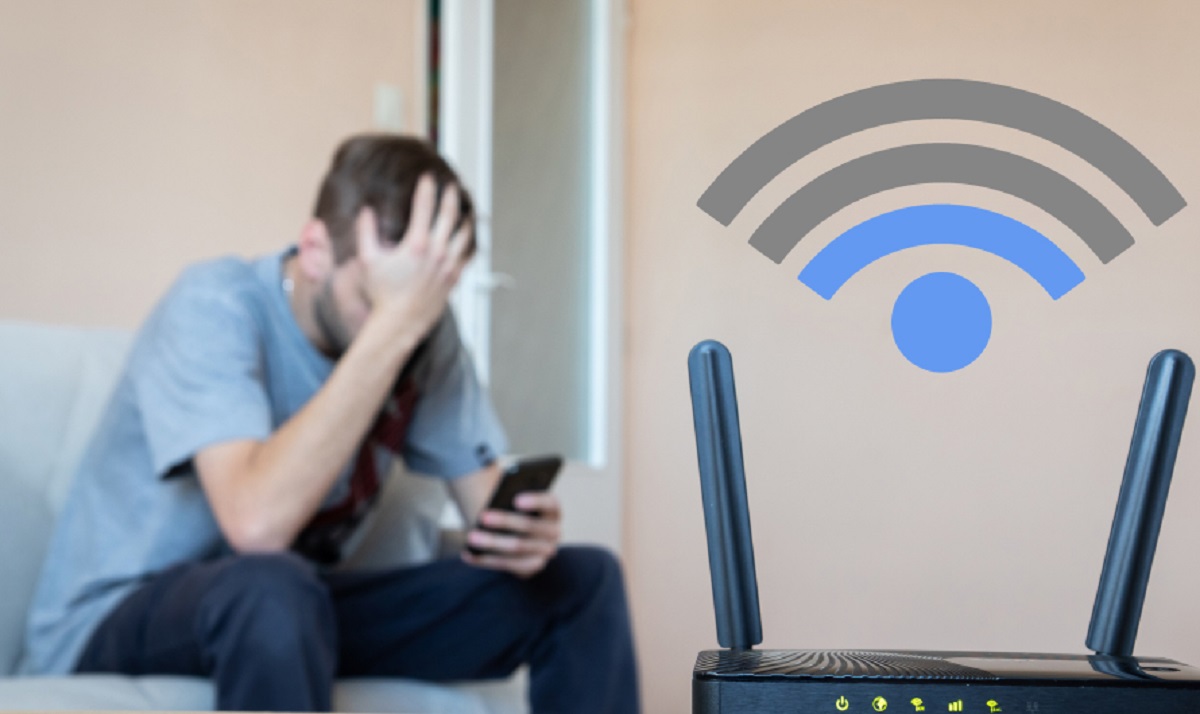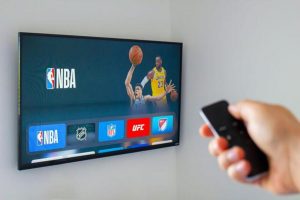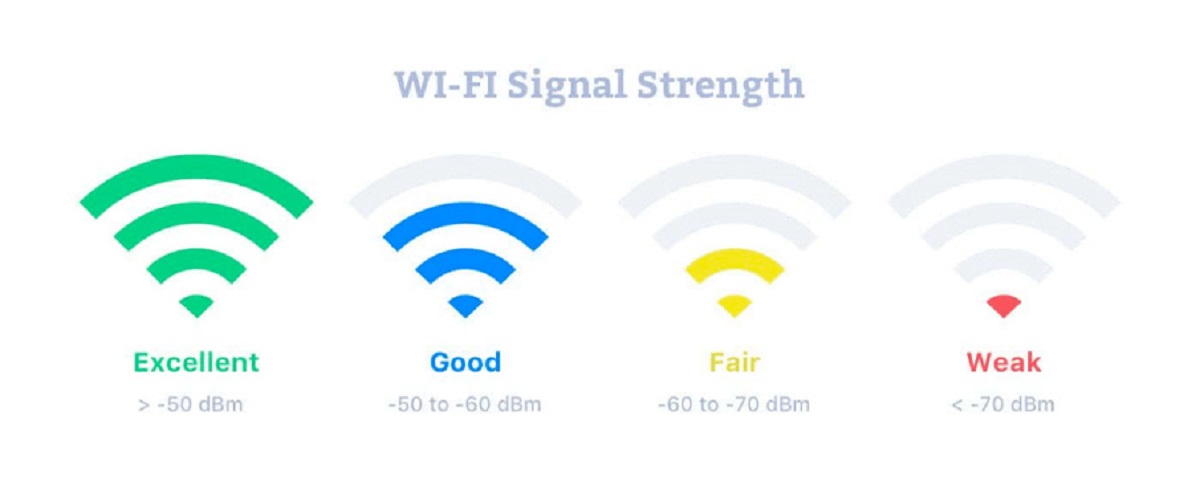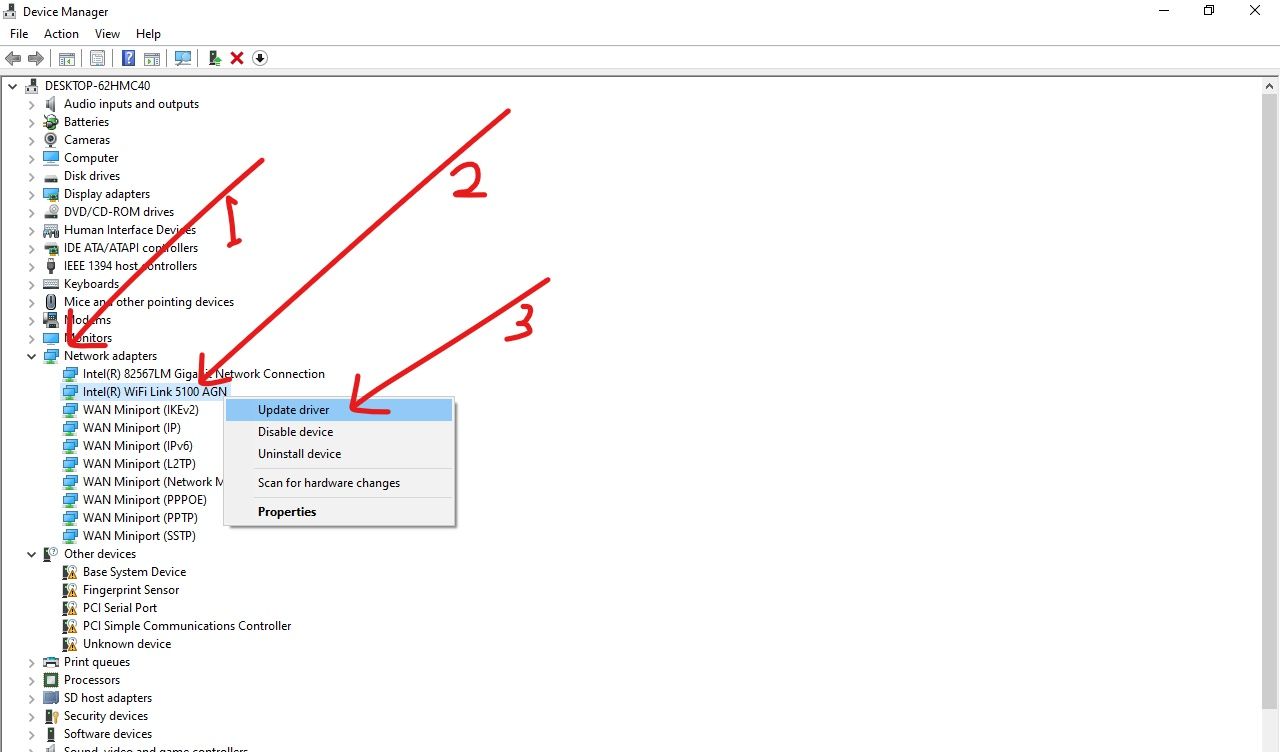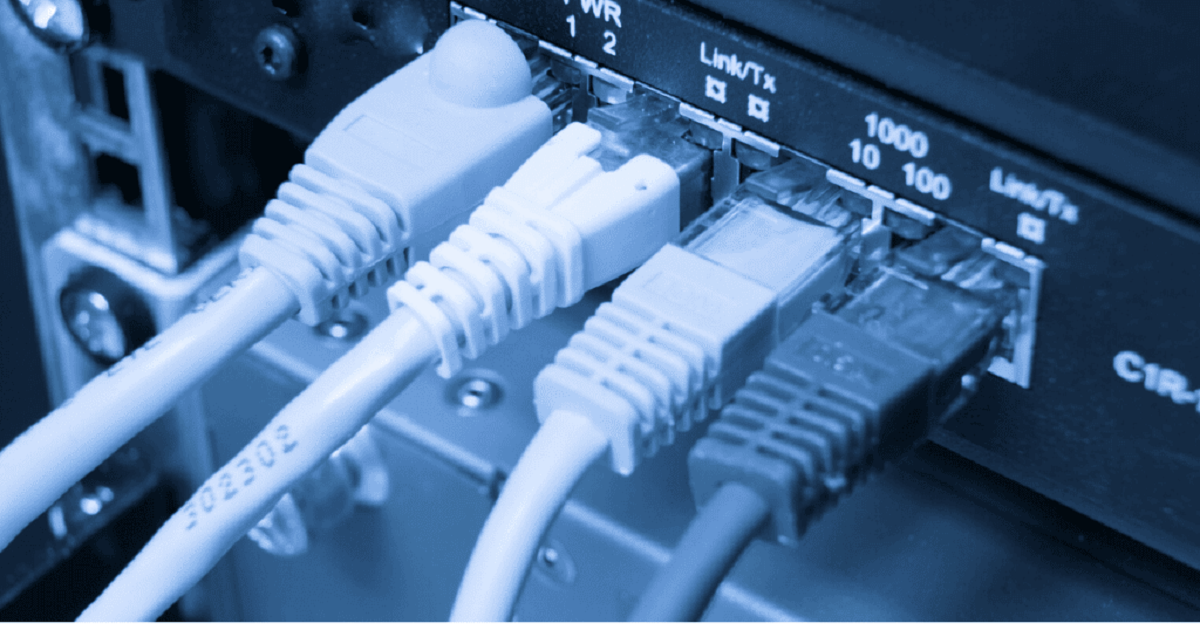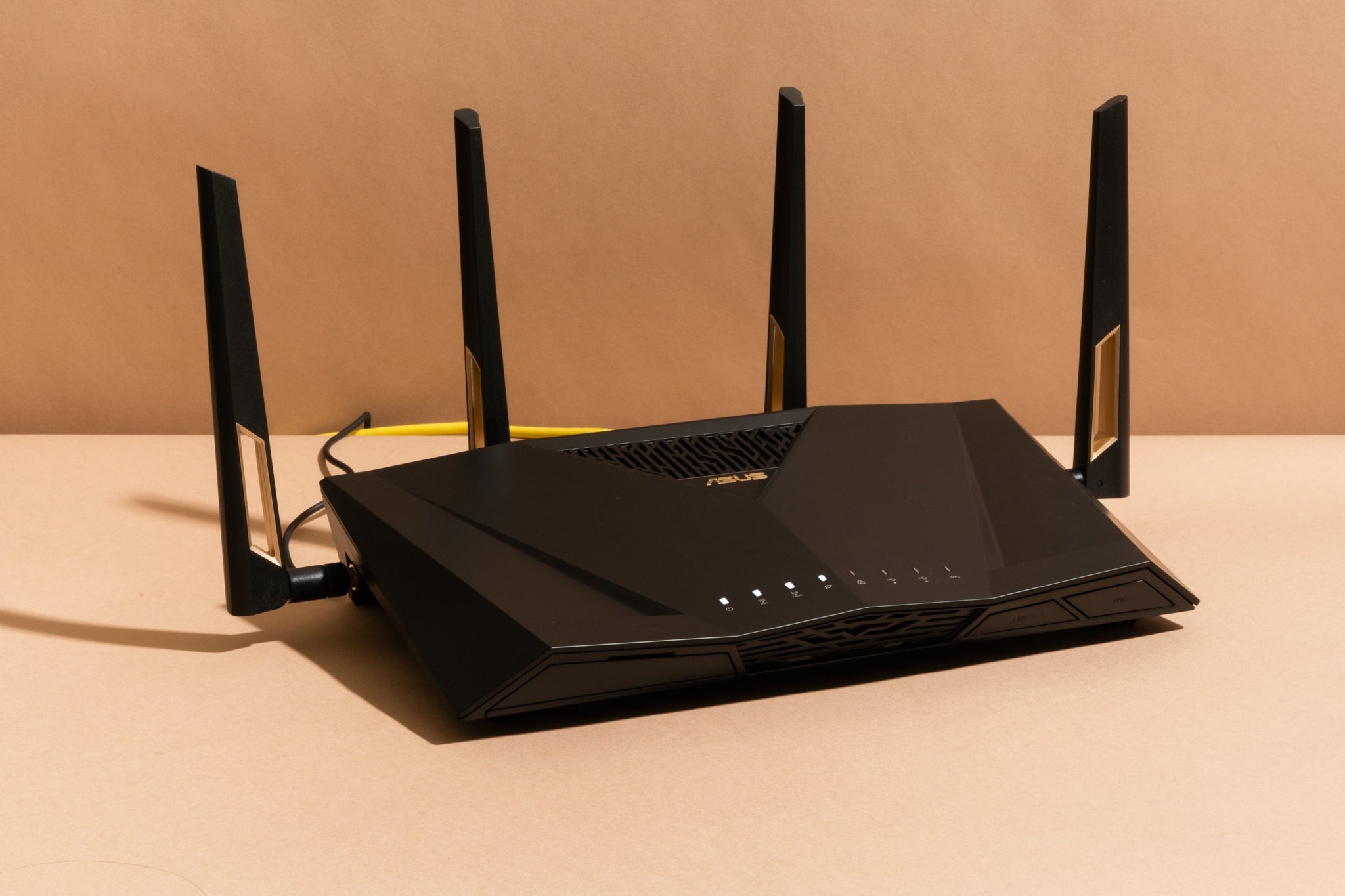Introduction
Welcome to the digital age where staying connected is essential. Whether it’s for work, entertainment, or simply staying in touch with loved ones, a stable Wi-Fi connection is indispensable. Unfortunately, many of us have experienced the frustration of our Wi-Fi suddenly disconnecting, disrupting our online activities and leaving us scratching our heads in search of a solution. In this article, we will explore the common causes behind Wi-Fi disconnections and provide some practical solutions to address this issue.
A reliable and uninterrupted Wi-Fi connection is crucial in today’s fast-paced world. From streaming movies and TV shows to video conferencing, online gaming, and browsing the web, we rely heavily on Wi-Fi to keep us connected and entertained. However, when our Wi-Fi keeps disconnecting, it can disrupt our daily routines and lead to frustration.
There are several factors that can contribute to Wi-Fi disconnections. Understanding these causes can help us troubleshoot and fix the issue effectively. In some cases, there may be interference from other devices, such as cordless phones or microwaves, disrupting the Wi-Fi signal. Issues with the Wi-Fi signal range, outdated router firmware, or an overloaded router can also lead to disconnections. Additionally, bandwidth limitations, network congestion, and Wi-Fi channel interference can play a role in this problem.
Fortunately, there are steps we can take to minimize Wi-Fi disconnections and ensure a more stable connection. In this article, we will discuss some possible solutions, such as restarting the router, updating the router firmware, reducing interference from other devices, checking the Wi-Fi signal range, switching Wi-Fi channels, and even upgrading the router if necessary. By implementing these solutions, we can improve the reliability of our Wi-Fi connection and enjoy uninterrupted online experiences.
So, if you find yourself constantly struggling with Wi-Fi disconnections, don’t worry – you’re not alone. In the following sections, we will delve deeper into the common causes of Wi-Fi disconnections and provide step-by-step solutions to address this issue. By following these guidelines, you can regain control over your Wi-Fi connection and enjoy smooth and uninterrupted internet connectivity.
The Importance of Stable Wi-Fi
In today’s interconnected world, having a stable Wi-Fi connection is more important than ever before. We rely on Wi-Fi for a multitude of tasks, from accessing emails and social media to streaming videos, playing online games, and conducting video conferences. A stable Wi-Fi connection not only provides convenience but also enhances productivity and entertainment value.
One of the key benefits of a stable Wi-Fi connection is seamless internet access. With a reliable connection, we can browse the web, download files, and stream media without interruptions. This is especially crucial for individuals who work remotely or students who attend online classes, as any disruption in the connection can hinder productivity and learning.
Unstable Wi-Fi connections can also impact entertainment experiences. Streaming movies and TV shows require a consistent and strong connection to avoid buffering or quality degradation. Disconnections can ruin the enjoyment of a movie or interrupt a crucial moment in a TV series, leaving us frustrated and eager to find a resolution.
Furthermore, online gaming heavily relies on a stable Wi-Fi connection. Whether playing multiplayer games or engaging in competitive eSports, a stable connection is crucial to avoid lags, delays, and disconnections. In the world of online gaming, split-second decisions and reaction times can determine victory or defeat, so a stable Wi-Fi connection is vital for a smooth gaming experience.
Stable Wi-Fi is also crucial for video conferences and virtual meetings. With the rise of remote work and distance learning, individuals increasingly rely on video calls to communicate and collaborate. A stable connection ensures clear audio and video quality, minimizing disruptions and enhancing communication effectiveness.
Moreover, a stable Wi-Fi connection allows us to utilize smart home devices efficiently. From smart thermostats to security systems, smart TVs, and voice-controlled assistants, these devices rely on a reliable Wi-Fi connection to function optimally. Without a stable connection, smart home devices may become unresponsive or fail to perform their intended functions.
Overall, a stable Wi-Fi connection is essential for productivity, entertainment, and convenience. It ensures uninterrupted access to the internet, enhances entertainment experiences, enables smooth online gaming, facilitates effective communication, and optimizes the functionality of smart home devices. With the increasing reliance on technology in our daily lives, investing in a stable Wi-Fi connection is a wise decision that can greatly improve our digital experiences.
Common Causes for Wi-Fi Disconnections
Wi-Fi disconnections can be frustrating, but understanding the common causes behind them can help us troubleshoot and resolve the issue effectively. Here are some of the most common culprits:
- Interference from Other Devices: Other electronic devices such as cordless phones, microwave ovens, baby monitors, and even neighboring Wi-Fi networks can cause interference and disrupt the Wi-Fi signal.
- Wi-Fi Signal Range Issues: If your Wi-Fi router is located too far away from the devices you’re trying to connect, the signal strength may not be strong enough to maintain a stable connection. Certain materials like concrete walls can also weaken the signal.
- Outdated Router Firmware: Router manufacturers often release firmware updates to improve performance and address bugs. If you’re using outdated firmware, it could lead to Wi-Fi instability and disconnections.
- Router Overload: If you have numerous devices connected to your Wi-Fi network and the router is unable to handle the traffic, it may become overwhelmed and result in disconnections.
- Bandwidth Limitations: If you’re experiencing frequent Wi-Fi disconnections, it could be due to bandwidth limitations imposed by your internet service provider (ISP). This can occur if you have multiple devices simultaneously using a significant amount of bandwidth.
- Network Congestion: In densely populated areas or apartments with multiple Wi-Fi networks in close proximity, network congestion can occur. This congestion leads to slower speeds and increased chances of disconnections.
- Wi-Fi Channel Interference: Wi-Fi routers usually operate on specific channels. If neighboring Wi-Fi networks are using the same channel, interference can occur, resulting in lower signal strength and potential disconnections.
It’s important to identify the underlying cause of the Wi-Fi disconnections before implementing a solution. By pinpointing the specific issue, you can tackle it directly, increasing the chances of successfully resolving the problem and enjoying a stable Wi-Fi connection.
Interference from Other Devices
One of the common causes of Wi-Fi disconnections is interference from other devices. The electromagnetic signals emitted by devices such as cordless phones, microwave ovens, baby monitors, and even neighboring Wi-Fi networks can interfere with and weaken the Wi-Fi signal, leading to frequent disconnections.
Devices like cordless phones and microwave ovens operate in the same frequency range as Wi-Fi networks, typically in the 2.4 GHz band. When these devices are in close proximity to the Wi-Fi router or the devices connecting to it, they can disrupt the Wi-Fi signal, causing intermittent disconnections. It’s important to note that not all cordless phones or microwave ovens will cause interference, but older models or malfunctioning devices are more likely to do so.
Similarly, baby monitors operating in the same frequency range as Wi-Fi networks can also be a source of interference. Baby monitors use wireless technology to transmit audio and video signals, and if they share the same frequency as the Wi-Fi network, they can interfere with the Wi-Fi signal strength, resulting in disconnections.
Neighboring Wi-Fi networks can also contribute to interference. If multiple networks in the vicinity are operating on the same Wi-Fi channel, it can lead to overcrowding and poor signal quality. This can cause signal interference, affecting the stability of your Wi-Fi connection.
To mitigate interference from other devices and improve Wi-Fi stability, there are several steps you can take:
- Position the Wi-Fi Router: Place the Wi-Fi router away from other electronic devices. Keep it at a considerable distance from cordless phones, microwave ovens, and baby monitors to minimize potential interference. Additionally, ensure that the router is positioned in a central location in your home to optimize coverage across different areas.
- Check and Change Wi-Fi Channels: Check the Wi-Fi channels in use by neighboring networks. If there are overlapping channels, changing your Wi-Fi channel can reduce interference and improve signal quality. This can typically be done through the router’s administration settings.
- Upgrade to a Dual-Band Router: Consider upgrading to a dual-band Wi-Fi router that operates in both the 2.4 GHz and 5 GHz frequency bands. The 5 GHz band is typically less congested and can offer better performance and reduced interference compared to the 2.4 GHz band.
- Use Wi-Fi Signal Analyzer Apps: Utilize Wi-Fi signal analyzer apps on your smartphone or computer to identify Wi-Fi congestion and interference. These apps can help you determine the optimal Wi-Fi channel and adjust your settings accordingly.
- Minimize Wi-Fi Network Overlap: If you have multiple Wi-Fi networks in your home, try to minimize their overlap by adjusting the positioning of your Wi-Fi routers or using range extenders. This can help reduce interference and enhance Wi-Fi stability.
By addressing the issue of interference from other devices, you can significantly improve the stability and reliability of your Wi-Fi connection, minimizing disconnections and ensuring a smoother online experience.
Wi-Fi Signal Range Issues
Another common cause of Wi-Fi disconnections is signal range issues. The distance between your Wi-Fi router and the devices you’re trying to connect can impact the strength and stability of the Wi-Fi signal. Additionally, certain materials, such as concrete walls or metal structures, can weaken the signal and lead to disconnections.
If your devices are too far away from the Wi-Fi router, the signal may not reach them adequately, resulting in a weak or unstable connection. This is especially true if you’re trying to connect to your Wi-Fi network from another room or on a different floor of your home. The farther you are from the router, the weaker the signal will be, increasing the likelihood of disconnections or slow speeds.
Moreover, certain building materials can impede the Wi-Fi signal, making it difficult for it to penetrate through walls or objects. Concrete, brick, metal, and even mirrors can block or weaken the signal, leading to reduced coverage and potential disconnections. Thick walls and multiple walls between the router and the devices can exacerbate this issue.
To address Wi-Fi signal range issues and improve stability, consider the following solutions:
- Reposition the Wi-Fi Router: Experiment with repositioning the Wi-Fi router to a more central location in your home. This can help distribute the Wi-Fi signal more evenly and improve coverage in different areas. Avoid placing the router in corners or near obstructions like large furniture or appliances that can block the signal.
- Use Wi-Fi Range Extenders: If you have a large home or areas where the Wi-Fi signal is weak, consider using Wi-Fi range extenders or mesh Wi-Fi systems. These devices can help amplify and extend the Wi-Fi signal to reach areas where the signal is typically weaker.
- Invest in Powerline Adapters: Powerline adapters allow you to use your home’s electrical circuitry to extend your Wi-Fi network. By connecting one adapter to your Wi-Fi router and another in a different area of your home, you can create a wired connection that provides a stronger and more reliable Wi-Fi signal.
- Upgrade to a Wi-Fi Mesh System: Wi-Fi mesh systems consist of multiple routers that work together to provide seamless coverage throughout your home. These systems can automatically switch your devices to the router with the strongest signal, ensuring a consistent and stable Wi-Fi connection.
- Consider Wireless Repeaters: Wireless repeaters, also known as Wi-Fi boosters or amplifiers, can help extend the Wi-Fi signal range. These devices pick up the existing Wi-Fi signal and rebroadcast it, boosting coverage and reducing the likelihood of disconnections in areas with weaker signals.
By addressing Wi-Fi signal range issues, you can enhance the coverage and stability of your Wi-Fi network, reducing disconnections and ensuring a more reliable connection throughout your home or workspace.
Outdated Router Firmware
Outdated router firmware is another common cause of Wi-Fi disconnections. Firmware is the software that operates and controls the functions of the router. Manufacturers regularly release firmware updates to improve performance, fix bugs, and enhance security. If your router is running on outdated firmware, it may lead to instability in your Wi-Fi connection and frequent disconnections.
Router firmware updates often include optimizations that can improve Wi-Fi performance, address compatibility issues with newer devices, and provide bug fixes related to connection stability. By keeping your router’s firmware up to date, you can ensure that it operates at its optimal performance level, reducing the chances of disconnections.
Updating router firmware is typically done through the router’s administration settings, which can be accessed via a web browser. Manufacturers may provide firmware updates on their official websites, along with instructions on how to install the update. Some routers also have an automatic firmware update feature, which can be enabled to keep the firmware up to date without manual intervention.
When updating router firmware, it’s essential to follow the manufacturer’s instructions carefully. Incorrectly installing firmware or a disruption during the update process can potentially damage the router or render it inoperable. Before updating firmware, it’s also recommended to backup your router’s settings in case any configurations are reset during the update.
Regularly checking for firmware updates and promptly installing them is crucial to ensure that your Wi-Fi router functions optimally and maintains a stable connection. By keeping the firmware up to date, you can resolve known issues, enhance compatibility with devices, and improve the overall performance and reliability of your Wi-Fi network.
If you’re experiencing frequent Wi-Fi disconnections and suspect that outdated firmware may be the cause, check the manufacturer’s website or the router’s administration settings for any available updates. By taking this simple step, you can potentially fix connectivity issues and enjoy a more stable Wi-Fi experience.
Router Overload
Router overload is a common cause of Wi-Fi disconnections, especially in households or environments with multiple connected devices. Routers have a finite capacity to handle the incoming and outgoing data traffic, and when this capacity is exceeded, it can lead to instability and frequent disconnections in the Wi-Fi network.
As the number of devices connected to your Wi-Fi network increases, so does the demand on the router’s resources. Each device consumes a portion of the available bandwidth, and when multiple devices are actively using the internet simultaneously, the router may struggle to keep up with the data demands, resulting in congestion and disconnections.
Some common signs of router overload include sluggish internet speeds, increased latency, frequent buffering when streaming, and, of course, the Wi-Fi disconnections themselves. These issues can particularly arise during peak usage hours when many devices are simultaneously trying to access the internet.
To address the issue of router overload and minimize Wi-Fi disconnections, you can implement the following solutions:
- Limit the Number of Connected Devices: If possible, reduce the number of connected devices on your Wi-Fi network. Disconnect any devices that are not actively being used or prioritize essential devices that require a stable connection.
- Manage Bandwidth Usage: Some routers offer bandwidth management features that allow you to allocate more bandwidth to specific devices or applications. Prioritize bandwidth for critical devices or activities that require a stable connection.
- Upgrade to a Higher-Speed Internet Plan: If your current internet plan does not provide sufficient bandwidth for the number of devices in your household or workplace, consider upgrading to a higher-speed plan. This can help alleviate the strain on your router and reduce the chances of overload and disconnections.
- Invest in a More Powerful Router: If your current router is unable to handle the demands of your network, consider upgrading to a more powerful and robust router that can handle higher traffic loads. Look for routers with better processing power and more advanced features to ensure smooth and stable Wi-Fi connectivity.
- Implement Quality of Service (QoS) Settings: QoS settings allow you to prioritize certain types of internet traffic over others. By configuring QoS settings on your router, you can prioritize essential applications such as video calls or online gaming, ensuring a stable connection even during heavy network usage.
By addressing router overload, you can significantly reduce Wi-Fi disconnections and improve the overall stability and performance of your Wi-Fi network. Understanding the limits of your router and implementing strategies to manage network traffic can lead to a smoother and more reliable online experience for all connected devices.
Bandwidth Limitations
Bandwidth limitations imposed by your internet service provider (ISP) can contribute to Wi-Fi disconnections and hinder the performance of your network. Bandwidth refers to the maximum amount of data that can be transmitted over your internet connection in a given time frame. If your ISP has set limitations on the amount of bandwidth you can use, it can lead to congestion, slower speeds, and even disconnections.
Bandwidth limitations can be particularly problematic if you have multiple devices connected to your Wi-Fi network and all of them are simultaneously consuming a significant amount of data. Activities such as streaming high-definition videos, downloading large files, online gaming, or video conferencing can quickly consume a substantial portion of your available bandwidth.
If you exceed your allocated bandwidth, your ISP may throttle your connection speed or impose additional charges. In some cases, ISPs may even introduce data caps, which limit the amount of data you can use within a given billing period. When you approach or exceed these limits, your connection speed may slow down significantly, leading to disconnections or interruptions in your Wi-Fi network.
To address bandwidth limitations and minimize Wi-Fi disconnections, consider the following solutions:
- Check and Upgrade Your Internet Plan: Contact your ISP to review your current internet plan and consider upgrading to a plan with higher bandwidth or without data caps. This can provide you with more flexibility and alleviate bandwidth constraints.
- Monitor and Manage Data Usage: Keep track of your data usage to stay within the allocated limits set by your ISP. Some routers have built-in data usage monitoring tools that can help you track your usage. Also, be aware of data-intensive activities and distribute them across different times of the day to avoid exceeding your bandwidth limitations.
- Optimize Streaming Settings: Adjust the streaming quality settings on your devices and streaming services. Lowering the resolution or limiting streaming quality can help reduce data consumption and prevent unnecessary strain on your bandwidth.
- Enable Quality of Service (QoS) Settings: Some routers offer QoS settings, allowing you to prioritize certain types of internet traffic over others. By configuring QoS settings, you can ensure that critical applications or devices receive sufficient bandwidth, minimizing the chances of disconnections.
- Utilize Wi-Fi Offloading: If you have a reliable cellular data connection, consider offloading data-intensive activities to your cellular network instead of relying solely on Wi-Fi. This can help reduce the strain on your Wi-Fi network and avoid potential disconnections caused by bandwidth limitations.
By managing your bandwidth effectively and exploring options to increase your allocated bandwidth, you can minimize the impact of bandwidth limitations on your Wi-Fi network. These steps will ultimately improve the stability and performance of your network, reducing the occurrence of disconnections.
Network Congestion
Network congestion in densely populated areas or environments with multiple Wi-Fi networks can contribute to Wi-Fi disconnections and slower internet speeds. When there are too many devices competing for the available network resources, it can lead to a congested network, resulting in decreased performance and increased chances of disconnections.
In busy residential areas or apartment buildings, the presence of numerous Wi-Fi networks operating in close proximity can cause interference and congestion. The overlapping of Wi-Fi signals can lead to decreased signal strength and slower speeds, impacting the overall stability of your Wi-Fi connection.
Network congestion tends to be more noticeable during peak usage hours when most people are actively using their Wi-Fi networks. During these times, the available bandwidth is shared among a larger number of users, leading to reduced speeds and increased network congestion.
To address network congestion and minimize Wi-Fi disconnections, consider the following solutions:
- Change Wi-Fi Channels: Check the Wi-Fi channels in use by neighboring networks and change your Wi-Fi channel to one that is less congested. This can help reduce interference and improve signal quality, ultimately minimizing disconnections caused by network congestion.
- Optimize Router Placement: Ensure your Wi-Fi router is positioned in a central location within your home or office. This can help distribute the Wi-Fi signal more evenly and improve coverage throughout the space. Avoid placing the router near obstructions or sources of interference, such as large furniture, appliances, or walls with metal structures.
- Upgrade to a Dual-Band Router: Consider upgrading to a dual-band Wi-Fi router that operates in both the 2.4 GHz and 5 GHz frequency bands. The 5 GHz band is typically less congested and can offer better performance, reducing the impact of network congestion on your Wi-Fi connection.
- Implement Quality of Service (QoS) Settings: Configure QoS settings on your router to prioritize critical applications or devices that require a stable connection. By giving priority to essential activities like video conferencing or online gaming, you can ensure a more reliable connection even during periods of network congestion.
- Limit Background Activities: Avoid running data-intensive background activities, such as large file downloads or system updates, during peak usage hours. By minimizing the strain on the network, you can reduce the chances of disconnections and help alleviate network congestion.
By actively managing network congestion and making adjustments to your Wi-Fi setup, you can improve the stability and performance of your Wi-Fi connection, reducing the likelihood of disconnections caused by network congestion.
Wi-Fi Channel Interference
Wi-Fi channel interference can contribute to Wi-Fi disconnections and degrade the quality of your wireless network. Wi-Fi routers operate on specific channels, and if neighboring networks or devices are using the same or overlapping channels, it can cause interference, leading to lower signal strength and potential disconnections.
When multiple Wi-Fi networks operate in close proximity using the same channel, their signals can interfere with each other. This interference can result in decreased performance, slower speeds, and increased chances of disconnections. Additionally, devices such as baby monitors, cordless phones, wireless video cameras, and even microwave ovens can operate in the same frequency range as Wi-Fi networks, further contributing to channel interference.
To address Wi-Fi channel interference and minimize disconnections, consider the following solutions:
- Use a Wi-Fi Scanner: Utilize Wi-Fi scanner apps or tools to identify the channels being used by surrounding networks. This can help you determine which channels are the least congested and select a channel that is less likely to experience interference.
- Switch to a Less Congested Channel: Access your router’s administration settings and manually change the Wi-Fi channel to a less congested one. Shifting to a less crowded channel can improve signal quality and reduce interference, leading to a more stable Wi-Fi connection.
- Configure Router to Automatically Choose Optimal Channels: Some routers offer an automatic channel selection feature that scans for the least congested channels and adjusts the settings accordingly. Enable this feature on your router to take advantage of automatic channel selection and minimize interference.
- Upgrade to a Dual-Band Router: Consider upgrading to a dual-band Wi-Fi router that operates in both the 2.4 GHz and 5 GHz frequency bands. The 5 GHz band typically offers more channels and is less crowded, providing a better chance of finding a channel with minimal interference.
- Adjust Channel Width: Narrowing the channel width on your router’s settings can reduce interference from neighboring networks. While this may slightly decrease the maximum data transfer rate, it can improve Wi-Fi stability and reduce the chances of disconnections.
By addressing Wi-Fi channel interference, you can significantly improve the stability and performance of your wireless network, reducing the occurrence of disconnections caused by channel interference. Always remember to regularly monitor for channel congestion, adjust channels as needed, and utilize the tools and features available on your router to optimize your Wi-Fi connection.
Possible Solutions to Fix Wi-Fi Disconnections
Experiencing frequent Wi-Fi disconnections can be frustrating, but fortunately, there are several solutions you can try to address this issue. By implementing the following steps, you can improve the stability and reliability of your Wi-Fi connection:
- Restart the Router: Sometimes, a simple restart can resolve temporary issues that are causing Wi-Fi disconnections. Power off your router, wait for a few seconds, and then power it back on. This helps refresh the router’s settings and can restore a stable Wi-Fi connection.
- Update Router Firmware: Check for any available firmware updates for your router from the manufacturer’s website. Outdated firmware can cause Wi-Fi instability, so updating to the latest version can resolve potential compatibility issues and improve the overall performance of your router.
- Reduce Interference from Other Devices: Keep your Wi-Fi router away from devices that can cause interference, such as cordless phones, microwave ovens, and baby monitors. Also, consider using devices that operate on a different frequency or switch to a different channel to minimize interference and improve Wi-Fi stability.
- Check Wi-Fi Signal Range: Ensure that your Wi-Fi router is positioned in a central location within your home or office, away from obstructions. If the distance between your router and the devices you’re trying to connect is too far, consider using Wi-Fi range extenders or mesh Wi-Fi systems to extend the signal range and improve coverage.
- Switch Wi-Fi Channels: If neighboring Wi-Fi networks are using the same channel as yours, it can lead to interference and disconnections. Access your router’s administration settings and manually switch to a less congested channel to minimize interference and improve signal quality.
- Upgrade Your Router: If your current router is outdated or unable to handle the demands of your network, consider upgrading to a more powerful and modern router. A newer router can offer improved performance, better range, and additional features that can enhance your Wi-Fi experience.
By trying these possible solutions, you can troubleshoot and resolve Wi-Fi disconnections. Keep in mind that the effectiveness of each solution may vary depending on your specific situation. It may require a combination of steps or further troubleshooting to identify and address the underlying cause of the disconnections. If the issue persists, you may also consider consulting with a professional or contacting your internet service provider for assistance.
Restart Router
When faced with frequent Wi-Fi disconnections, one of the simplest and most effective solutions you can try is restarting your router. Restarting the router helps clear any temporary glitches or issues that may be causing disruptions in your Wi-Fi connection.
Over time, routers can encounter various software or hardware-related issues that can impact their performance, resulting in disconnections. Restarting the router provides a fresh start, allowing it to reestablish its connection with your internet service provider and refresh its settings.
Here’s how you can restart your router to potentially resolve Wi-Fi disconnections:
- Power Off: Locate the power button or unplug the power adapter from the router to turn it off. Wait for at least 10-15 seconds to ensure that all residual power is discharged from the device.
- Disconnect Power Source: If your router doesn’t have a power button, unplug the power adapter from the wall outlet or the router itself.
- Wait and Reconnect: After shutting down the router, wait for about 30 seconds to a minute before reconnecting the power source.
- Power On: Plug the power adapter back into the router or turn on the power switch. Give the router a few moments to boot up and establish a connection with your ISP.
- Reconnect Devices: Once the router has fully restarted, reconnect your devices to the Wi-Fi network. Check if the disconnections have been resolved.
Restarting the router can often resolve temporary issues or conflicts that might be causing Wi-Fi disconnections. It allows the router to reestablish its connection and refresh its internal settings, which can help improve the stability of your Wi-Fi network.
Keep in mind that while restarting the router is a simple solution, it may not address deeper underlying issues if the disconnections persist. If the problem persists after restarting the router, you may need to explore other troubleshooting steps or seek assistance from your internet service provider or a professional technician.
Update Router Firmware
Updating your router’s firmware is an important step to address Wi-Fi disconnections and ensure the optimal performance of your network. Router manufacturers regularly release firmware updates that include bug fixes, security enhancements, and performance improvements. By keeping your router’s firmware up to date, you can resolve known issues that may be causing Wi-Fi disconnections.
Here’s how you can update your router’s firmware:
- Check for Updates: Visit the manufacturer’s website or access your router’s administration settings to check for any available firmware updates. Look for the model-specific firmware updates that are compatible with your router.
- Download the Firmware: Download the latest firmware update from the manufacturer’s website. Make sure to download the correct firmware version for your specific router model.
- Access Router’s Web Interface: Open a web browser and type the default IP address of your router into the address bar. This IP address is usually mentioned in the router’s manual or can be found on the manufacturer’s website. Enter your router’s login credentials to access the settings page.
- Upload Firmware: Within the router’s settings, navigate to the firmware update section. Choose the firmware update file you downloaded and initiate the firmware update process. Follow the on-screen instructions provided by the router’s interface.
- Wait for Installation: Allow the firmware update to install completely. Do not turn off or unplug the router during this process, as it may cause damage or render the router inoperable. The router may restart automatically once the firmware update is successful.
Updating the router’s firmware can bring numerous benefits, such as improved stability, enhanced security, and better compatibility with newer devices. It can also fix known issues that could be causing Wi-Fi disconnections. However, it’s essential to proceed with caution and follow the specific instructions provided by the manufacturer to avoid any potential problems during the update process.
Remember that not all routers have automatic firmware updates enabled by default. In such cases, it’s crucial to periodically check for firmware updates yourself and proactively install them to ensure your router operates at its best.
If you continue to experience Wi-Fi disconnections even after updating the router’s firmware, consider exploring other troubleshooting options or consulting with the manufacturer’s support team for further assistance.
Reduce Interference from Other Devices
Interference from other devices can be a common cause of Wi-Fi disconnections. Various electronic devices, such as cordless phones, microwave ovens, baby monitors, and neighboring Wi-Fi networks, can emit signals that interfere with the Wi-Fi frequency, resulting in a weakened or disrupted connection. By reducing interference from these devices, you can improve the stability and reliability of your Wi-Fi network.
Here are some solutions to minimize interference from other devices:
- Keep Devices Away from the Router: Position your Wi-Fi router away from devices that can potentially cause interference, such as cordless phones, microwave ovens, or baby monitors. Maintain a sufficient distance between the router and these devices to minimize signal interference.
- Use Devices on a Different Frequency: Choose devices that operate on a different frequency or band than your Wi-Fi network. For example, opt for cordless phones that operate on the 5 GHz frequency instead of the 2.4 GHz used by most Wi-Fi networks. This can help reduce interference between devices.
- Switch Wi-Fi Channels: If there are multiple Wi-Fi networks operating on the same channel in your area, it can cause interference and affect the stability of your Wi-Fi connection. Access your router’s administration settings and manually switch to a less congested channel to minimize interference.
- Upgrade Your Devices: Older devices may emit stronger interference signals. Consider upgrading to newer models or devices with improved technology that is designed to minimize Wi-Fi interference.
- Use Wi-Fi Signal Analyzers: Utilize Wi-Fi signal analyzer apps or tools to identify any sources of interference in your environment. These tools can scan for competing networks or detect signal obstructions, allowing you to make adjustments to reduce interference.
- Place Devices Strategically: Position devices that may cause interference away from areas where you frequently use Wi-Fi-dependent devices. For example, place your cordless phone base station away from your home office or living room where you primarily use your Wi-Fi for work or entertainment.
Minimizing interference from other devices can go a long way in improving the stability and performance of your Wi-Fi network. By implementing these solutions, you can reduce the likelihood of signal disruptions, maintain a stronger connection, and enjoy smooth and uninterrupted internet connectivity.
Check Wi-Fi Signal Range
Checking the Wi-Fi signal range is crucial in maintaining a stable and reliable Wi-Fi connection. The signal range refers to the distance over which your Wi-Fi router can provide a strong and consistent signal to connected devices. If the Wi-Fi signal range is limited, you may experience weak signals or frequent disconnections when you move further away from the router.
Here’s how you can check the Wi-Fi signal range:
- Check Signal Strength: Walk around your home or workspace with your device and observe the signal strength indicator on the Wi-Fi icon. Note areas where the signal strength drops significantly, as these areas may be prone to more frequent disconnections.
- Perform Speed Tests: Use online speed test tools or smartphone apps to measure the upload and download speeds in different areas of your space. Poor speeds in certain areas can indicate weak Wi-Fi signal coverage and potential disconnection points.
- Identify Signal Obstacles: Identify potential obstructions that may impede Wi-Fi signals, such as thick walls, metal structures, or large appliances. These obstacles can weaken the signal and reduce the Wi-Fi range. Note areas where obstructions are present and where the signal may be affected.
- Consider Router Placement: Evaluate the current placement of your Wi-Fi router. If it is tucked away in a corner or hidden behind furniture, it may limit the Wi-Fi signal range. Reposition the router to a more central location in your home or workspace to improve signal coverage and minimize disconnections.
- Use Wi-Fi Signal Analyzer Apps: Utilize Wi-Fi signal analyzer apps on your smartphone or computer to measure signal strength and identify dead zones or areas with weak coverage. These apps can provide visual heat maps to help you visualize and understand the signal range better.
- Utilize Wi-Fi Extenders or Mesh Systems: If you identify areas with weak Wi-Fi coverage or frequent disconnections, consider using Wi-Fi range extenders or mesh Wi-Fi systems. These devices help extend the Wi-Fi signal range by amplifying and distributing the signal to those areas.
By checking the Wi-Fi signal range and identifying areas with weak coverage, you can take steps to optimize your Wi-Fi network’s performance. Repositioning the router, removing signal obstacles, or using Wi-Fi extenders can help minimize disconnections and ensure a more seamless and reliable Wi-Fi connection throughout your space.
Switch Wi-Fi Channels
Switching Wi-Fi channels can be an effective solution to minimize interference and improve the stability of your Wi-Fi connection. Wi-Fi routers operate on specific channels within the 2.4 GHz and 5 GHz frequency bands, and if neighboring Wi-Fi networks are using the same or overlapping channels, it can lead to interference and signal degradation.
Here’s how you can switch Wi-Fi channels to potentially resolve interference issues:
- Identify Channel Congestion: Use Wi-Fi analyzer apps or tools to scan for neighboring Wi-Fi networks and identify which channels they are using. Look for channels that are heavily congested or overlapping with your current Wi-Fi channel.
- Access Router Settings: Open a web browser and enter your router’s default IP address into the address bar. Log in using your router’s credentials, which are usually provided on the router itself or in the documentation.
- Navigate to Wi-Fi Settings: Find the Wireless or Wi-Fi settings tab within your router’s interface. Look for an option to change the channel. The exact location and naming of the settings may vary depending on your router’s brand and model.
- Select a Less Congested Channel: Choose a Wi-Fi channel that is less congested or has fewer overlapping networks. Channels 1, 6, and 11 are commonly used and have less overlap. However, it’s best to refer to the results from your Wi-Fi analyzer to select the least congested available channel.
- Save and Apply Changes: Once you have selected a new channel, save the settings and wait for your router to apply the changes. It may take a few moments for the changes to take effect.
- Reconnect Devices: After switching the Wi-Fi channel, reconnect your devices to the Wi-Fi network. Ensure they are set to automatically connect or manually select the updated channel if prompted.
By switching Wi-Fi channels, you can reduce interference from neighboring Wi-Fi networks and improve the stability of your Wi-Fi connection. This can result in fewer disconnections and a more reliable experience when using your Wi-Fi devices.
It’s worth noting that switching to an uncrowded channel may not completely eliminate interference, especially if there are other non-Wi-Fi devices causing interference. Surveillance cameras, baby monitors, and cordless phones can also operate on the same frequency band and interfere with Wi-Fi signals. In such cases, repositioning the devices or using wired connections may be necessary to achieve optimal Wi-Fi performance.
Upgrade Router
If you’re experiencing persistent Wi-Fi disconnections and other troubleshooting methods have not yielded satisfactory results, it may be time to consider upgrading your router. Upgrading to a newer and more advanced router can provide a range of benefits, including improved performance, better coverage, and enhanced stability for your Wi-Fi network.
Here are a few reasons why upgrading your router can help resolve Wi-Fi disconnection issues:
- Improved Technology: Newer routers often incorporate the latest Wi-Fi standards and technologies, such as Wi-Fi 6 (802.11ax). These standards offer faster speeds, better support for multiple devices, and more efficient network performance, which can result in a more stable and reliable Wi-Fi connection.
- Increased Processing Power: Upgrading to a more powerful router can enhance the processing capabilities, making it better equipped to handle multiple devices and network demands. A router with a faster processor can help reduce congestion and improve performance, reducing the likelihood of disconnections.
- Expanded Wi-Fi Coverage: Newer routers often come with more robust antennas and improved signal amplification capabilities, resulting in broader coverage throughout your home or office. This increased coverage reduces the chances of dead spots and ensures a more consistent connection across your space.
- Advanced Features: Modern routers offer an array of advanced features that can enhance your Wi-Fi experience. These features may include better Quality of Service (QoS) controls, guest network capabilities, automatic band steering, and parental controls. These enhancements can help prioritize critical activities, optimize network performance, and enhance security.
- Better Security: Upgraded routers typically have enhanced security features to better protect your network from potential threats. Advanced encryption types, built-in firewalls, and regular firmware updates can help safeguard your network and connected devices, reducing the risk of security breaches.
Before upgrading your router, it’s important to consider factors such as your internet plan, the number of devices in your network, and the size of your space. Additionally, research the specifications and customer reviews of different router models to choose one that best suits your needs.
Remember that upgrading your router alone may not resolve all Wi-Fi disconnection issues. It’s also important to ensure proper router placement, reduce interference from other devices, and optimize network settings for the best overall performance.
By investing in a newer and more advanced router, you can significantly improve the stability, speed, and reliability of your Wi-Fi connection, reducing Wi-Fi disconnections and enhancing your overall internet experience.
Conclusion
Wi-Fi disconnections can be frustrating, but with the right approach and troubleshooting steps, you can improve the stability and reliability of your Wi-Fi network. In this article, we explored the common causes of Wi-Fi disconnections, including interference from other devices, signal range issues, outdated router firmware, router overload, bandwidth limitations, network congestion, and Wi-Fi channel interference.
We discussed various possible solutions to address these issues, such as restarting the router, updating router firmware, reducing interference from other devices, checking Wi-Fi signal range, switching Wi-Fi channels, and upgrading the router. These steps can help optimize your Wi-Fi network, minimize interference, and reduce the chances of disconnections.
It’s important to note that each Wi-Fi network setup is unique. The effectiveness of the solutions may vary based on your specific environment, router model, and internet service provider. Therefore, it may require a combination of these solutions or further troubleshooting to identify and address the underlying causes of Wi-Fi disconnections.
Remember to regularly check for firmware updates for your router, position the router in a central location, avoid interference from other electronic devices, and ensure adequate Wi-Fi signal coverage. By implementing these steps, you can enjoy a more stable and reliable Wi-Fi connection, enhancing your online experiences.
If you continue to experience persistent Wi-Fi disconnections despite troubleshooting efforts, consider consulting with your internet service provider or seeking professional assistance to resolve any underlying network infrastructure issues.
By staying proactive and taking appropriate measures, you can minimize Wi-Fi disconnections and empower yourself with a seamless and uninterrupted internet experience.







